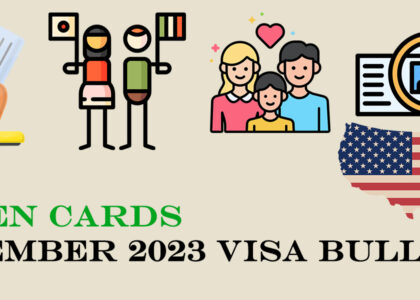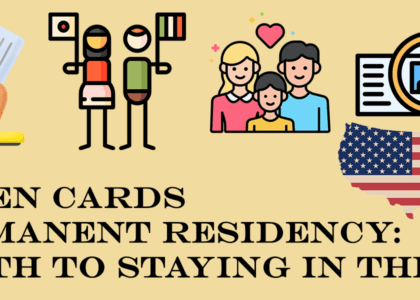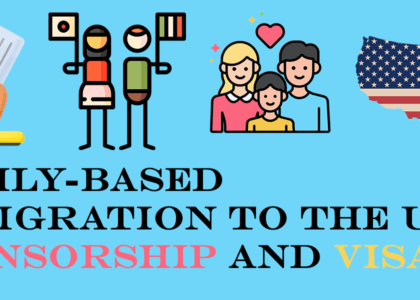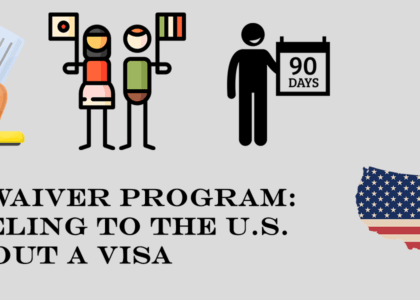So you want to visit the United States or stay for a longer period. Great! The U.S. welcomes millions of visitors and new immigrants each year. But to enter the country, you’ll need the proper documentation in the form of a visa. The type of visa you need depends entirely on the purpose and length of your stay. With over 185 different types of US visas, the application process can seem overwhelming. Don’t worry, we’ve got you covered. In this guide, we’ll break down the major categories of U.S. visas and walk you through the steps to apply for each one. Whether you’re coming for tourism, work, study, or permanent residence, you’ll find all the details you need to get the right visa for your trip.
Overview of U.S. Visa Types
The U.S. offers several types of visas for both short-term and long-term stays. The specific visa you’ll need depends on the purpose and duration of your visit.
Visitor Visas: The Most Common Types for Short-Term Stays
The most common visas for short-term visits to the U.S. are visitor visas, also known as nonimmigrant visas. The main types are:
B-1 Business Visitor Visa
If you’re traveling to the U.S. for business, the B-1 visa is probably right for you. It allows you to attend meetings, negotiations, conventions, or conferences. To qualify, you must show strong ties to your home country and that your trip is solely for business.
B-2 Tourist Visa
The B-2 tourist visa is ideal for those visiting the U.S. for tourism, vacation, or travel. It permits you to see the sights, go shopping, visit friends or family, and engage in other tourist activities. Stays are usually shorter, around 3 months. You’ll need to prove you have a residence in your home country that you don’t intend to abandon.
Student and Exchange Visas: For Studying and Cultural Exchange
As an international student or participant in a cultural exchange program, you’ll need a student visa or exchange visitor visa to study or work in the U.S. The most common types are F-1 visas for students and J-1 visas for exchange visitors.
F-1 Student Visas
If you want to study in the U.S., you’ll need an F-1 student visa. This allows you to enter the U.S. as a student at an accredited college, university, or other academic institution. You must be enrolled in a program that offers a degree, diploma, or certificate.
F-1 visas are granted for the duration of your study program, plus 60 days. You can stay in the U.S. for up to 60 days after completing your program. F-1 visas also allow opportunities for post-graduate work, like OPT. Dependents of F-1 students, such as spouses and children, can apply for F-2 visas to accompany the student.
J-1 Exchange Visitor Visas
If you want to participate in an exchange visitor program to teach, study, conduct research, or receive on-the-job training in the U.S., you need a J-1 visa. These exchange programs promote mutual understanding between the U.S. and other countries. Participants get opportunities for learning and growth, then return home to share their experiences.
J-1 visas are granted for the duration of your exchange program. Dependents of J-1 exchange visitors can apply for J-2 visas. Some popular J-1 programs are teacher exchanges, internships, summer work, and au pair.
See also: J1 Visa and Its Process and Requirements
Work Visas: Options for Temporary and Permanent Employment
If you want to come to the U.S. temporarily for work or possibly immigrate permanently, you’ll need a work visa. The type of visa you need depends on the kind of work you’ll be doing and how long you plan to stay.
H-1B Visa
The H-1B visa is for highly skilled foreign professionals in specialty occupations that require a bachelor’s degree or higher in a specific field of study. This includes jobs like scientists, professors, doctors, engineers, and computer programmers. The H-1B visa is granted for up to three years and can be extended for another three years. If you have an H-1B visa, your spouse and unmarried children under 21 may be eligible for H-4 visas to accompany you.
L-1 Visa
For international companies, the L-1 visa allows managers, executives, and employees with specialized knowledge to transfer from the company’s foreign office to their U.S. office. The L-1A visa is for executives, and the is for workers with specialized knowledge. These visas are initially granted for up to three years and can be extended in two-year increments for a total of seven years for L-1As and five years for L-1Bs.
EB-1-5 Visa
The EB-1, EB-2, EB-3, EB-4, and EB-5 visas are employment-based immigrant visas in the United States. The EB-1 visa is for individuals with exceptional abilities and includes categories like extraordinary ability, outstanding researchers, and multinational managers. EB-2 is for those with outstanding abilities or advanced degrees, with a National Interest Waiver option. EB-3 is for skilled workers, professionals, and others with U.S. job offers, involving a labor certification process. EB-4 is for special immigrants like religious workers and unique categories. Lastly, EB-5 is the Immigrant Investor Program, requiring a significant investment in a U.S. business creating jobs, offering a pathway to permanent residency for investors and their families.
Immigrant Visas: For Obtaining Permanent Residency or Citizenship
Immigrant visas are for those seeking to immigrate to the U.S. permanently. The most well-known types are family-based visas and employment-based visas.
Family-based Immigrant Visas
If you have a U.S. citizen as a family member or lawful permanent resident (green card holder), they may be able to sponsor you for a family-based immigrant visa. The processing time varies depending on the specific category but can take several years. The main categories are:
Immediate Relatives: For spouses, unmarried children under 21, and parents of U.S. citizens. No annual limit.
Family Preference: For adult children, siblings, and married children of U.S. citizens and their spouses/children.
Employment-based Immigrant Visas
If you have a job offer from a U.S. employer who will sponsor you, you may be eligible for an employment-based immigrant visa. The employer must obtain a labor certification and file an I-140 immigrant petition to establish that there are no qualified U.S. workers for the position.
The path to a green card and citizenship through employment is often faster than the family-based route. However, there are annual limits for the number of green cards issued in each category.
Conclusion
That sums up the major types of visas available for travel to the United States. Now you have a solid overview of the options, from tourist visas to work visas to green cards. The visa process can seem complicated, but breaking it down into these categories helps make it more digestible. Whether you’re planning a family vacation, looking for career opportunities, or hoping to move permanently, you have a much better sense of which visa pathway is right for your needs. The key is doing plenty of research, preparing strong applications, and being patient through what can sometimes be a lengthy process. But with the proper visa in hand, a whole new experience in America awaits. Now get excited about your next U.S. adventure – could be closer than you think!






